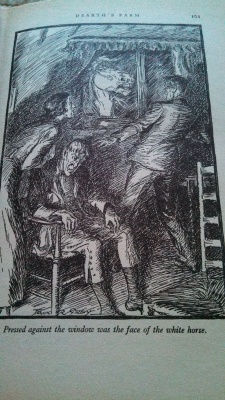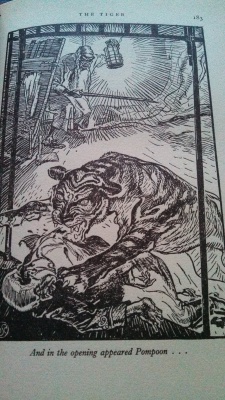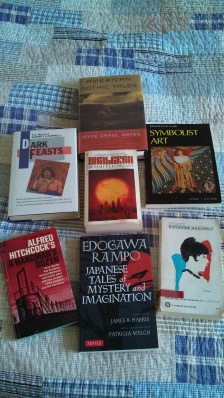
Cover featuring Ernst Ludwig Kirchner’s woodcut “Self Portrait: Melancholy of the Mountains.” (1929).
“Enough,” replied the dreamlike presence, “take your flowers cheerfully, as life offers them, and don’t dig for their roots in the ground, it’s sad and silent down below.” – Josef von Eichendorff, ‘The Marble Statue.’
I’ve just finished the Penguin anthology Tales of the German Imagination from the Brothers Grimm to Ingeborg Bachmann. It is a survey of German fantastic fiction, running from early Märchen (the rougher German term for fairy tales) to the expressionism of Georg Heym and the Dadaism of Kurt Schwitters. Oft anthologized classics such as Hoffman’s “The Sandman” and Adelbert von Chamisso’s “Peter Schlemiel” are included, but so are a large number of more obscure pieces. Writers more unknown to English speaking audiences such as Klabund and Salomo Friedlander make appearances, while other inclusions come from unlikely sources such as Robert Walser and the poet Paul Celan (whose befuddling prose-poem “The Shadowlight” I found disappointing.)
Editor Peter Wortsman notes in the introduction the hard-edged quality to much of German fantasy, its preoccupation with the macabre and the violent. The violence in this anthology begins with fratricide in the Grimms’ “The Singing Bone” and and culminates in the absolutely horrific and bloody “The Lunatic” by the poet Georg Heym. This tale follows an asylum inmate released for mysterious reasons who goes on a killing rampage that begins in the pond-haunted countryside and ends in the dullness of a shopping center in the town. It is brief, brutal, and bereft of moralizing or sentiment. The most disquieting segment of the story is when the eponymous lunatic tromps through a field and imagines that the ripe stalks bursting under his feet are the heads of random strangers. It is a conte cruel at heart, with all of the extremity of famous practitioner Charles Birkin, and none of the cleverness that suggests he is telling a joke.
I remember reading Joe R. Lansdale’s “Night They Missed the Horror Show,”* with its dedication to the author’s friend, presenting it as “a story that doesn’t flinch.” Heym does not flinch here, either. Nor does he blink. Something of the “invisible spectator” objectivity of Paul Bowles is here as well, as if the story’s point of view came from that of an indifferent bird circling overhead, sharp eyes sucking in the deranged vision with perfect calm.
A more humorous exercise in such loamy, Teutonic, worm-wriggling darkness comes from the aforementioned Kurt Schwitters, whose “The Onion” is about a man sentenced to execution and consumption by the state. Its plot doesn’t sound like a merry, piss-inducing chuckle compared to the Heym piece, but its violence is of the madcap variety, that belonging almost to early Schlesinger cartoons. It is every bit as gory as “The Lunatic” but its treatment could not be more different, both in that its structure is as disordered as the mental state of the former’s protagonist, but also in that every swing of the knife seems to be met with literary “anvil” sounds and to echo with not-yet-invented canned laughter.
Moving on to less bodily focused fare, Wolfgang Borchert’s “The Dandelion” is a beautifully wrought tale of a prisoner (imprisoned for obscure reasons, of course) who is brought out every day into the exercise yard to run in a circle around a pitiful scrub of field. In the midst of rancorous hatred and jealousy of his fellow inmates, he falls in love with a yellow dandelion flower that has shot up out of the meager pittance of a field. The final passage is truly lovely and bewildering, something warranting meatier consideration than the miserly rendering given here. Suffice to say it is a highlight.
Ingeborg Bachmann’s “The Secrets of the Princess of Kagran” features a landscape reminiscent of Algernon Blackwood’s “The Willows.” The captured-then-escaped princess navigates a wind scoured swamp, vast and unfamiliar, resonant with the slushing of willow through water, charged with the possibility of starvation.
But enough summation. I’d rather temporarily silence the gaseous trumpets of blathering, and provide a different viewpoint for this anthology: namely, a fractured look at its various fictions by presenting completely out of context quotes and mashing them together senselessly like a charlatan. These were wandering phrases, knights-errant clauses blundering through the stupefied landscape of my brain, which I picked out capriciously, redundantly, and for no reason at all. Is this avant-garde? Or just bullshit? Bullshit-garde? I don’t know. Nor care. They hopefully will provide another piece of evidence for the prosecution of this alleged “German imagination.” Say what you will, such excerption might not be German to this blog posting, but neither is it Hungary for provocation:
the plants, herbs, flowers, and trees are all squirming in pain, consumed by a great wound
the sculpture of Venus, now so terribly white and motionless
he knelt over their faces and blew air into the holes in their skulls
a spider that squeezes a scaffold out of its rear end
at least my children will no longer do without their own guillotine and gallows
the frenzy of that imagined-inflicted kiss, kissed by the demons
sleeping sphinxes nestled beneath the dream spectres of the trees
this hostile landscape, a world of willow, wind and water
‘bone rot!’ i screamed and let yellow dust fall from my ribs
to scout out the greatest iniquity, the cross was nailed onto Christ
i took my legs out of my knapsack
i’ve just pinioned my sister as a weather-vane on the church steeple
she turned her back to the mirror, for she could not abide its vanity
on a plate with knife and fork they served up the eyes
flowers sprouting from his skin: anemones

Benes Knupfer (1848-1910), The Embrace. One of my favorite paintings. Man, it’s nice.
* Don’t read this Lansdale story if you are not okay with the dialogue of a bunch of racist fucks dropping slurs every other sentence. And also violence, and also whatinthefuckwasthatshitjesus


















































